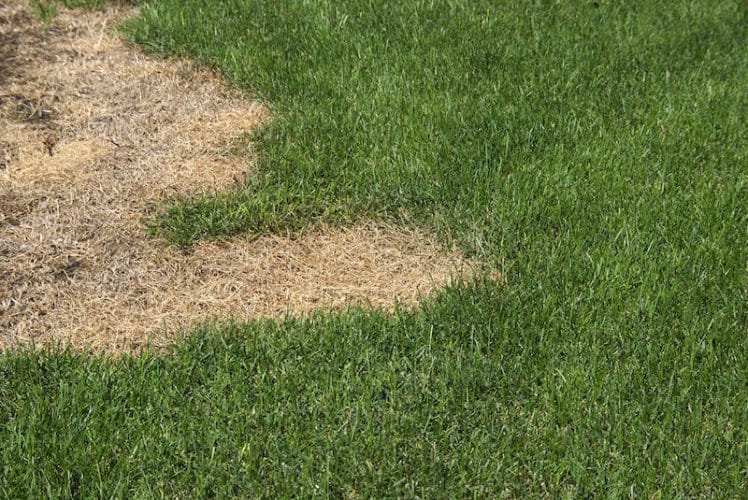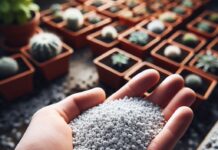Apply the proper mix and amount of lawn fertilizer to avoid fertilizer burn and promote a lush, green, healthy, weed-free turf.
Every homeowner dreams of a lush, green carpet of grass–the envy of the neighborhood. In the pursuit of this perfection, lawn enthusiasts subject their turf to everything from shampoo to beer to fertilizer–the most common additive being a fertilizer. Turf fertilizer provides the most cost-effective boost to poor lawns, encouraging turf growth and providing protection from weeds, disease, pests, and environmental factors. It’s easy for the novice to overuse fertilizer or to apply it incorrectly.
The thinking goes something like this: “If a little is good, a lot is better. If fertilizing in spring and fall is recommended, I’ll add summer and winter to the fertilizer schedule just to be safe.” This overzealous approach frequently results in fertilizer burn.
Fertilizer burn is dehydration. Salt buildup from chemicals inhibits the grass blades from absorbing water. The burn results from only one thing: the incorrect application of fertilizer. Severe dehydration eventually kills the grass.
Telltale Signs of Fertilizer Burn
Spotting fertilizer burn is easy if you know the signs. If your lawn displays either of the following signs several days after applying fertilizer, suspect fertilizer burn:
- Grass blades turn yellow, brown, white, or tan.
- The lawn displays yellow, brown, white, or tan stripes.
A little knowledge about fertilizer goes a long way toward cultivating and maintaining a healthy lawn and preventing fertilizer burn.
What is Lawn Fertilizer?
Turf requires sixteen elements to grow. Commercial “complete” fertilizers contain the most important three elements: nitrogen, phosphorus (sometimes listed as phosphate), and potassium (sometimes listed as potash). Lawns often require an annual feeding of these three elements, but nitrogen is the nutrient that depletes the most rapidly. Home lawn fertilizer is available in solid granule form and liquid form. The solid form is better for covering large areas.
Fertilizer labels display three numbers; for example, 10-6-18. These three numbers indicate the percentage of the three essential elements. A fertilizer with a mix of 10-6-18 means that it contains 10% nitrogen, 6% phosphorus, and 18% potassium. Nitrogen supplies the green to the lawn, phosphorus feeds the roots, and potassium promotes the overall health of the lawn.
Home lawn complete fertilizers contain slow-release nitrogen, fast-release nitrogen, or a combination of the two. A combination of slow-release and fast-release nitrogen is best. The fast-release nitrogen greens the lawn quickly, in approximately three to five days. The slow-release nitrogen maintains a green lawn by providing nitrogen at a constant rate.
Tips for Avoiding Fertilizer Burn
• Fertilize in spring and fall, not in the middle of summer. Summer heat contributes to fertilizer burn and encourages weed growth rather than turf growth. The best time to fertilize varies by location. Check with your local lawn-care center for the best window of opportunity in your area.
- Use the Scotts Turf Builder EdgeGuard DLX Broadcast Spreader to apply Scotts lawn care products
- Comes pre-calibrated and ready-to-use
- Scotts exclusive EdgeGuard Technology keeps lawn product off landscaping, driveways, and sidewalks
- Features redesigned hopper and agitator for smoother product funneling and consistent coverage
- Holds up to 15,000 sq. ft. of product, including grass seed, fertilizer, salt and ice melt
• Perform a soil test to determine lawn nutrient deficiencies every three to five years. You may need to apply lime instead of, or in addition to, fertilizer.
• Buy quality fertilizer. Select the best fertilizer mix for your turf. Ask your lawn-care center for help, and be prepared to tell them how many square feet you need to fertilize. You may only need to apply nitrogen instead of a complete mix. Applying nutrients that already exist is not only a waste of money, but it results in the salt build-up that contributes to fertilizer burn.
• Select a fertilizer with a combination of slow-release and fast-release nitrogen.
• Apply fertilizer to dry turf. You can safely apply fertilizer to slightly damp soil if you do not see or feel any droplets of water on the grass.
• Use a spreader to apply solid fertilizer. Attach liquid fertilizer to a hose. Follow the instructions to ensure proper calibration for solid granules or the proper rate of flow for liquid fertilizer.
• Apply fertilizer at half the recommended rate. Make the application in one direction, barely overlapping with each pass. Make the second application at right angles to the first application, in a grid pattern. This method takes twice as long, but it helps avoid striping the lawn.
• Open the spreader only after you have started walking, and close the spreader before you stop walking.
• Never apply more fertilizer than the manufacturer recommends.
• Water the lawn well within 24 hours after applying solid fertilizer.
Note: Whenever you work with chemicals, take appropriate precautions. Cover your body and hands, and wear a dust mask. Keep pets and children away for 24 hours.
Surviving Fertilizer Burn
If you even suspect that you may have applied fertilizer incorrectly, you can try to remove the excess fertilizer and then water the lawn to dilute the chemicals. If you accidentally dumped fertilizer in a localized area, use a wet/dry vacuum cleaner to remove as much as possible before watering.
If you applied massive amounts of fertilizer to the entire lawn, attach a bag to the mower and try to “vacuum” the lawn before watering. Water until the ground is thoroughly soaked, and then water again. Water the lawn every day for the next few days. If you catch your mistake in time, you can reverse the conditions before any significant damage occurs.
Fertilizing Tips For Lawn Turfgrass
Turfgrasses, as well as bedding plants, require nourishment to stay healthy. Keeping a well-fertilized lawn will produce a thicker turf, richer more vibrant color, and helps reduce the number of weeds that can invade your lawn by basically smothering out the weeds before they have a chance to develop a foothold in your lawn. Some basic tips for fertilizing your lawn include:
Amounts Fertilizers
A common misconception is that more is better. Plants and vegetation can only use and absorb so much fertilizer so fast. An excess will possibly just be washed away with watering or rainfall. Overfeeding can also cause an excess of tender new grass, which is highly susceptible to insects and requires excess watering and mowing and can burn your lawn leaving it brown and discolored. Always read the product label before applying any fertilizer. Follow the recommended application rates for your particular grass type.
Slow-release fertilizers are great for homeowner use Dulong-lasting long-lasting ability and the less likelihood of burning the grass with over-fertilization. Check the label and local garden centers for recommendations on your particular grass species.
Recommended application rates are generally based on the amount of fertilizer required to supply a given amount of Nitrogen per 1,000sq/ft. of turf. The amount of fertilizer required to apply 1 pound of Nitrogen to 1,000sq/ft of turf can be calculated by dividing 100 by the percentage of Nitrogen in the fertilizer.
Types of Lawn Grass Fertilizers
Fertilizer content is listed numerically in order of:
1. Nitrogen fertilizer
Stimulates growth in the leaf blades and gives the turf the green color in the leaf blades. The application of Nitrogen must be balanced with other plant nutrients. In the right amounts, Nitrogen will stimulate the plant’s usage of Phosphorus, Potassium, and other plant nutrients. Nitrogen in excess and cause weakening of the plants and decrease it’s resistance to diseases.
2. Phosphorus Fertilizer
Stimulates early root growth and development, and helps to increase soil bacteria. Unlike Nitrogen, an excess of Phosphorus does not have the harming effects when applied in excess.
3. Potassium Fertilizer
Encourages a healthy root system, promotes steady growth, counteracts the harmful effects of Nitrogen, promotes disease resistance, and helps to balance the effect of Nitrogen and Phosphorus. Calcium-rich soil aids in the availability of Potassium to plants and grasses.
4. Calcium Fertilizer
Calcium has several useful benefits. It indirectly increases the availability of Nitrogen, helps to form cell walls, neutralizes harmful acids, and generally aids in the efficiency of fertilizer.
When to Fertilize
Typically, the most ideal time to fertilize your lawn will be in the fall one to two months before the first frost. This will help to winterize your lawn and promote early growth and root development once the winter dormant periods are over. Late spring fertilizing is also acceptable and sometimes necessary once the spring growth surge is over.
This will usually be around mid-March to late May. You may also apply small amounts of fertilizer throughout the year whenever your turf is starting to decline. You should confirm thought that the decline is from lack of nutrients and not from normal dormancy due to periods of drought.
Application of Fertilizers
It’s best to use some form of broadcast spreader rather than applying the fertilizer by hand. You will receive a more uniform application by using a spreader with an adjustable application rate. Spreading fertilizer by hand can create areas with excessive fertilizer concentrations, which can lead to burning the grass. This can disturb the PH of the soil and create additional problems besides the dead spot in your lawn.
When using your broadcast spreader, try to apply half of the amount required in an up and down pattern, and the other half at a right angle to the first half. This helps to give your lawn a uniformed application.
Apply fertilizers just before a good rain, otherwise water thoroughly after application to help the fertilizer absorb into the soil. This will also help to prevent burning the grass













